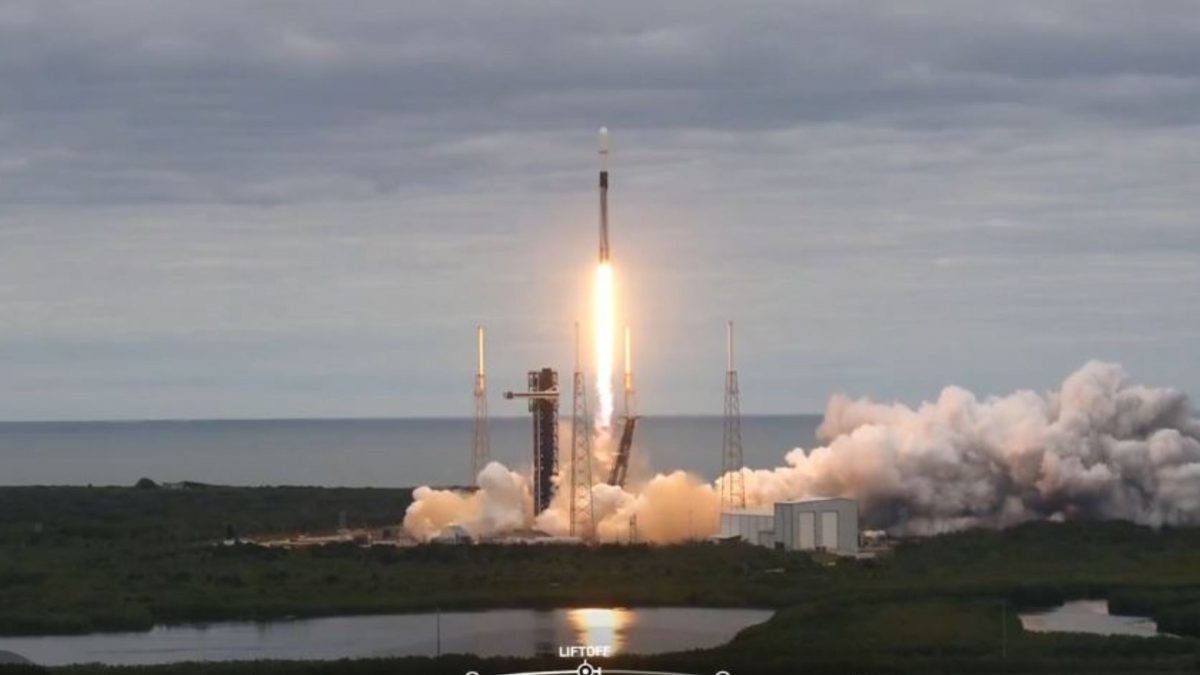Elon Musk-led rocket making company SpaceX launched its first-ever mission for the India Space Research Organisation (Isro) by successfully lifting off India’s heavy and most advanced communication satellite GSAT-20 (GSAT N-2) with its Falcon 9 rocket on Tuesday.
Just a minute past midnight (12:01 am) on November 19, SpaceX’s Falcon 9 lifted Isro’s most sophisticated communications satellite from Cape Canaveral Space Force Station in the US’ Florida. The launch pad was hired by SpaceX from the US’ Space Force.
Liftoff of GSAT-N2! pic.twitter.com/4JqOrQINzE
— SpaceX (@SpaceX) November 18, 2024
GSAT N-2, the 4,700 kilograms communication satellite, successfully completed its 34-minute journey into outer space onboard the Falcon 9 rocket before being deployed in geosynchronous transfer orbit.
Deployment of @NSIL_India GSAT-N2 confirmed pic.twitter.com/AHYjp9Zn6S
— SpaceX (@SpaceX) November 18, 2024
The satellite then began its journey to geostationary orbit, which lies 35,786 kms above Earth.
Meanwhile, the first stage of Falcon 9 came back to Earth about eight-and-a-half minutes after liftoff as planned, landing on the SpaceX droneship.
Impact Shorts
More ShortsFalcon 9’s first stage has landed on the Just Read the Instructions droneship pic.twitter.com/JJwn1gKqVh
— SpaceX (@SpaceX) November 18, 2024
About India’s communication satellite launched by SpaceX’s Falcon 9
The GSAT N-2 satellite weighs 4,700 kg and is very heavy for India’s own rockets to carry and therefore, Musk’s SpaceX was partnered for the launch.
Isro’s heaviest launch vehicle, the LVM-3 is capable of launching 4,000 kg spacecraft in the Geosynchronous Transfer Orbit.
Designed to enhance India’s communication infrastructure, the GSAT N-2 satellite features a Ka-band high-throughout communications payload with a mission lifespan of 14 years.
It is equipped with 32 user beams, including eight narrow spot beams over the Northeast region and the remaining 24 wide spot beams over the rest of India.
These 32 beams together will be supported by hub stations located within mainland India. The Ka-Band HTS communication payload provides a throughput of approximately 48 Gbps.
According to a report by The Indian Express, the GSAT N-2 satellite also features ka-ka transponders of NewSpace India Limited (NSIL), the commercial arm of Isro.
Once the satellite is operational, the beams with 48 Gbps throughput will provide vital services across India, including internet services in remote areas even in Andaman and Nicobar and Lakshadweep islands. It will also help cater in-flight and Maritime Telecom Connectivity (IFMC) internet service needs of the country.
According to a report by Hindustan Times, the estimated cost for the launch was between $60-70 million.
The many firsts
November 19 was the first time that Isro launched a satellite on a SpaceX rocket through NSIL.
Also, it was also the first time Isro has built a satellite that only uses the advanced Ka band frequency - a range of radio frequencies between 27 and 40 gigahertz (GHz), which enables the satellite to have higher bandwidth.
Why did Isro choose SpaceX?
For any such heavy satellite launches, so far, Isro relied on French commercial launch service provider Arianespace, however, the company did not have any operational rockets at present.
Also, the option from Russia could not be availed due to the Ukraine conflict, and with China being off-limits, SpaceX became the best available option for India for GSAT N-2 launch.
According to SpaceX, Tuesday was the 19th flight for the Falcon 9 first stage booster supporting Isro’s mission.
Also, the launch of GSAT-N2 was the third for SpaceX within a span of a few hours. The Musk’s company launched a satellite for the Australian telecom company Optus on Sunday (November 17) and lofted a batch of its own Starlink broadband satellites early Monday morning (November 18).
With inputs from agencies.


)

)
)
)
)
)
)
)
)



